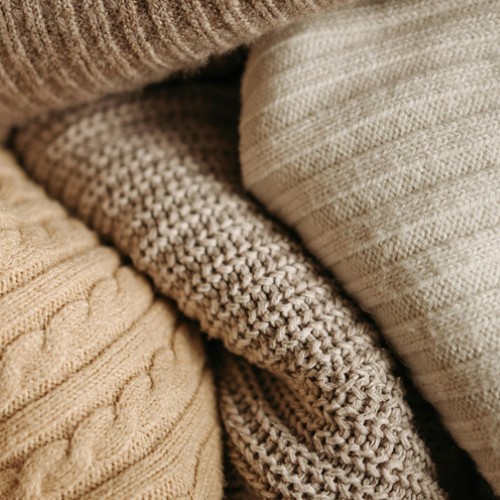What Is Polyamide Fabric?
You’ve likely seen polyamide fabric in clothes, bags, or curtains. It’s a durable, man-made material. Most people call it nylon—a name you hear everywhere. It’s tough and stretchy. It lasts for years. That’s why it’s so popular. Chuck wrote this article. He’s a textile expert with over 12 years of experience. He focuses on performance materials. And Chuck has shared insights at the 2022 Techtextil Conference. His work appears in Textile Technology. Let’s explore what polyamide is. We’ll see how it’s made and why it’s practical.
What Is Polyamide Fabric?
Polyamide comes from oil. It’s like a smart invention you can wear. Nylon started it all. DuPont invented it in 1935. It replaced silk in stockings. Now, it has different types. All are strong and light.
It feels smooth. It’s slightly slick. It’s not cozy like cotton. But it stretches well. That makes it great for workout clothes. It’s perfect for swimsuits too. Cotton and wool come from nature. Polyamide doesn’t. It’s made for action.
How Is Polyamide Fabric Made?
Polyamide begins with oil from underground. It’s like miners finding treasure. Exhibitors showed the process at the 2022 Techtextil Conference. They heat oil-derived ingredients to 280°C. These include adipic acid and hexamethylenediamine. The hot mix gets squeezed through 0.1mm holes. It’s like piping icing from a baker’s bag. This forms delicate threads. The threads cool. Then they stretch. Finally, they’re woven into fabric. It’s similar to making traditional candy. You spin sugar into strands. But here, strength replaces sweetness.

It takes lots of energy. Chemicals are used too. Econyl recycles old fishing nets, though. Their website says it’s been tested since 2019. Recycled nylon works in outdoor gear like jackets. It proves durable.
Why Does Polyamide Fabric Stand Out?
Polyamide has great perks. Real-world reviews highlight them.

It’s super strong. It resists tears. Its strength is 75-100 MPa. Cotton’s is only 25-30 MPa (Textile Research Journal, 2022). Outdoor Gear Lab’s 2023 review agrees. Polyamide backpacks beat cotton in tough tests. It’s stretchy too. It stretches up to 20%. It bounces back. Runner’s World praised it in 2023. Polyamide leggings stayed snug after 10 miles in warm weather. It’s light. Its density is 1.14 g/cm³. That’s perfect for travel bags. Travel + Leisure noted this in 2023. It dries fast. It wicks sweat 50% quicker than cotton (Textile Exchange, 2023). SwimSwam’s 2023 tests showed it. Polyamide swimsuits dried in under 30 minutes. It doesn’t wrinkle. It stays smooth easily. Good Housekeeping’s 2022 guide loves this. It’s made for active lives.
What Are Its Downsides?
Polyamide isn’t perfect. Users point out flaws.
It’s not airy. Cotton breathes better. REI Co-op Journal’s 2023 review said it. It feels sweaty on hot days. It soaks up little. It absorbs only 4% moisture. Cotton takes in 8% (Textile Exchange). Sweat clings, says Outside Magazine’s 2023 test. It harms the earth. Oil and chemicals make it. That’s not eco-friendly. It melts easily. High heat ruins it. Consumer Reports’ 2022 test warned about this. A shirt melted in a hot dryer. It’s not ideal for summer. Eco-minded folks skip it too.
Is Polyamide Fabric Eco-Friendly?

Polyamide’s eco-story is mixed. It relies on oil. That’s a limited resource. Production makes waste. Econyl’s recycled version helps. It cuts oil use by 70,000 barrels per 10,000 tons (Econyl 2023 Report). Regular nylon isn’t green. Good on You says so.
Recycling changes things. Patagonia uses old nets and plastic. Their 2023 blog confirms it. Recycled nylon is as strong. It reduces waste too.
How Do You Care for Polyamide Fabric?
Caring for polyamide is simple. Wash it in cold or warm water. That’s per Good Housekeeping’s 2022 guide. Use a gentle cycle. It stays in shape. Don’t use bleach. It’s too harsh. Dry it on low. Or hang it up. Consumer Reports’ 2022 test proved it. High heat melts it.
Check the tag. It might blend with cotton or stretchy fibers. For stains, dab with mild soap. Good Housekeeping suggests this. Polyamide gear lasts through many washes.
How Does Polyamide Compare to Other Fabrics?
Here’s the breakdown.
Polyamide and polyester are synthetic. Polyamide is stronger. It’s stretchier too (Textile Exchange, 2023). Polyester costs less. It wrinkles less. Polyamide beats cotton in toughness. It dries faster. Cotton is softer. It’s airier but wrinkles more. Outside Magazine’s 2023 review says so. Use polyamide for active days. Pick cotton for relaxing.
Where Is Polyamide Used?
Polyamide is everywhere. You’ll find it in leggings. It’s in swimsuits and raincoats too. Campers use it for tents. REI Co-op Journal’s 2023 list proves it’s durable. At home, it’s in rugs. It’s in curtains too. Its versatility keeps it popular.

Why Choose Polyamide Fabric?
Polyamide is practical. It’s tough. It’s not the softest. It’s not the greenest either. But its strength shines. So does its stretch. Reviewers love it for hiking gear. It’s great in comfy wear too. Recycled options help the planet.
Want to try it? Look at recycled nylon brands. Got questions? Email [email protected]. Happy to chat!
Quick Summary
Polyamide is sturdy. It’s like nylon. It’s strong and stretchy. It dries fast. But it’s not super breathable. Oil makes it. Recycling improves it. Wash it gently. Keep heat low. It’s perfect for active days.
Sources
- Good on You: Nylon Guide—Clear eco facts.
- Econyl: Trash to Fabric—2023 recycling stats.
- Textile Research Journal, 2022—Strength data.
- Textile Exchange, 2023—Drying and absorbency info.
- Outdoor Gear Lab, 2023—Backpack durability review.
- Runner’s World, 2023—Legging test review.

